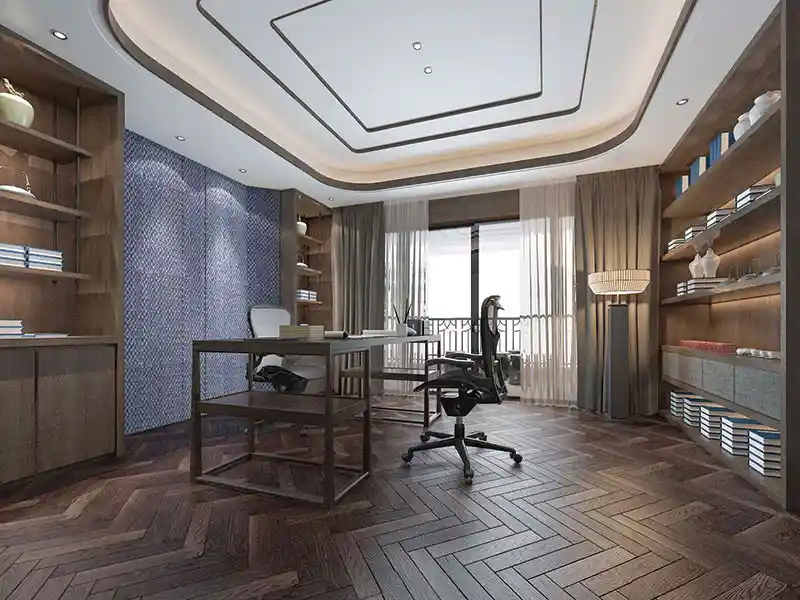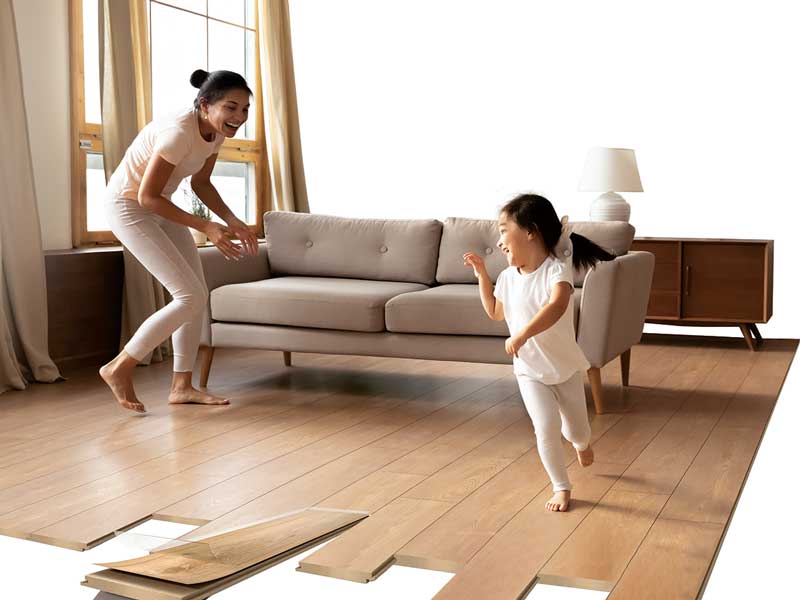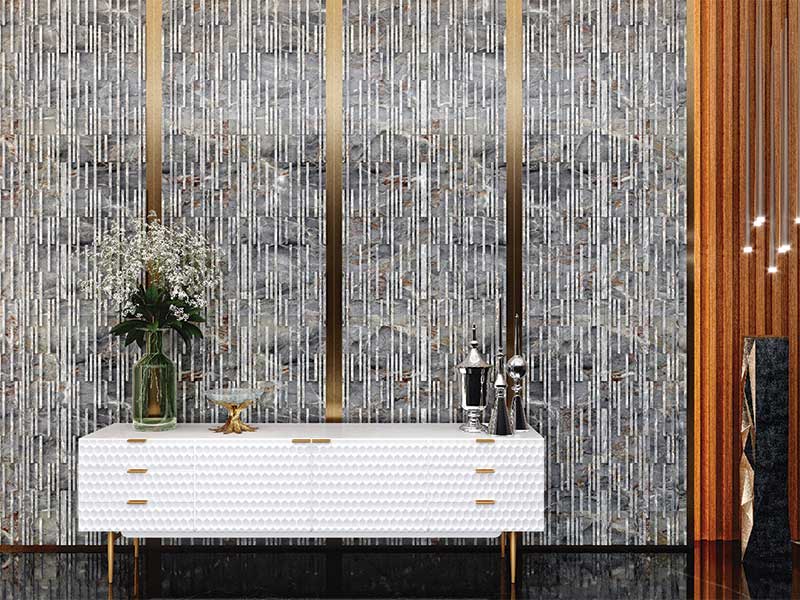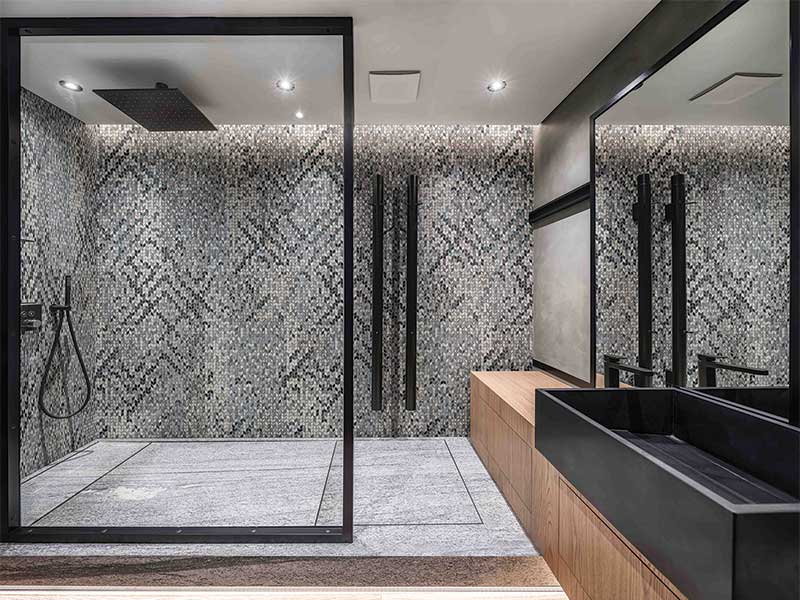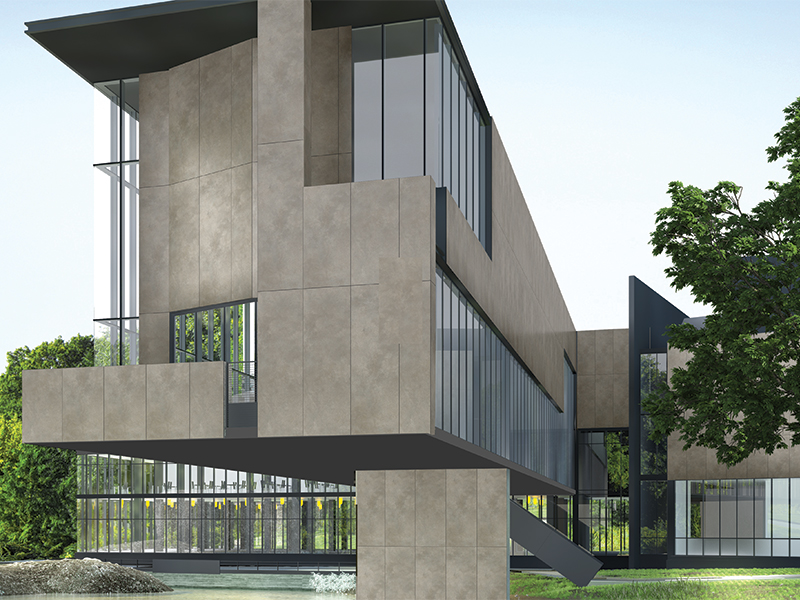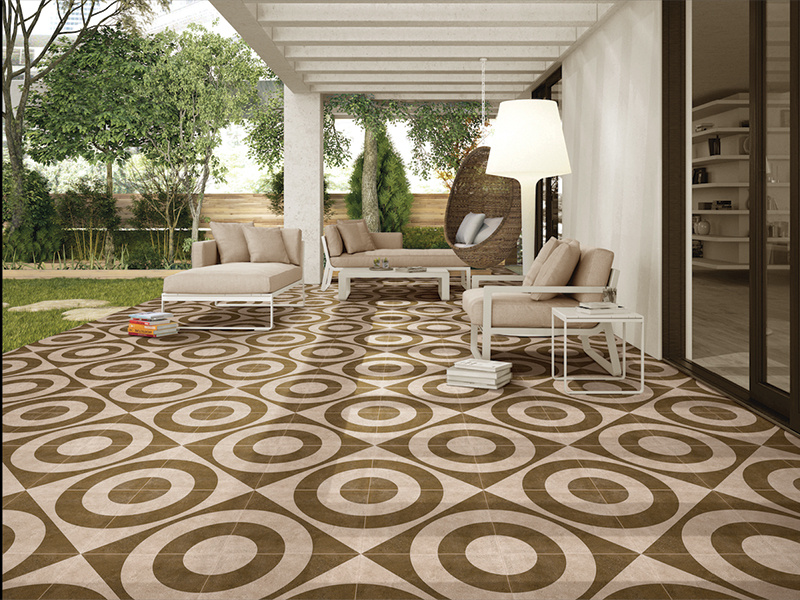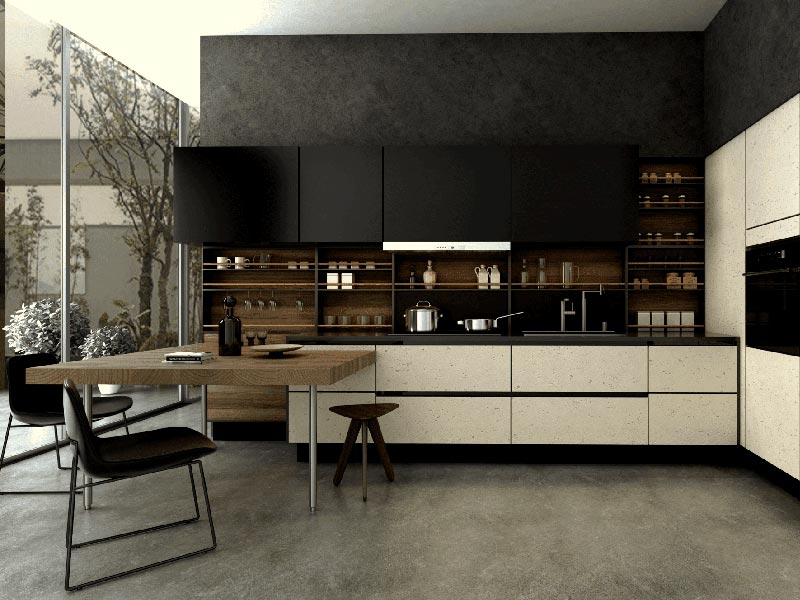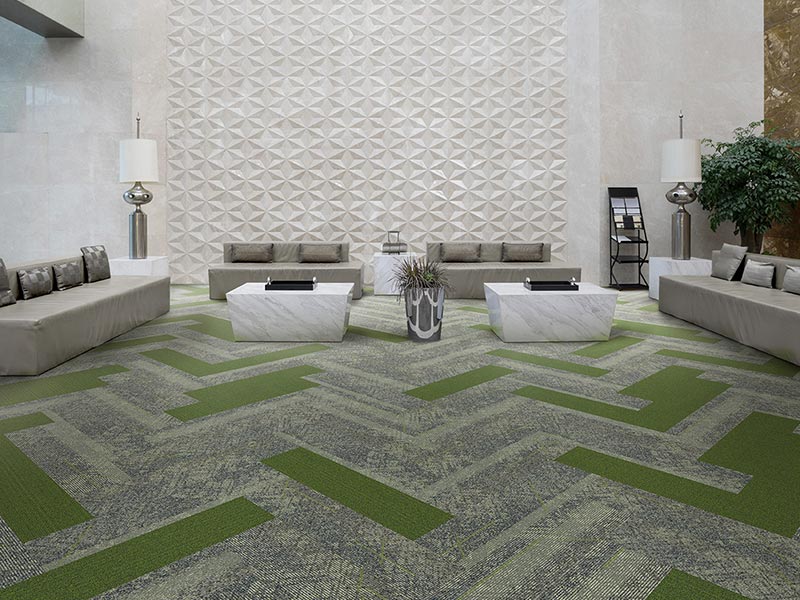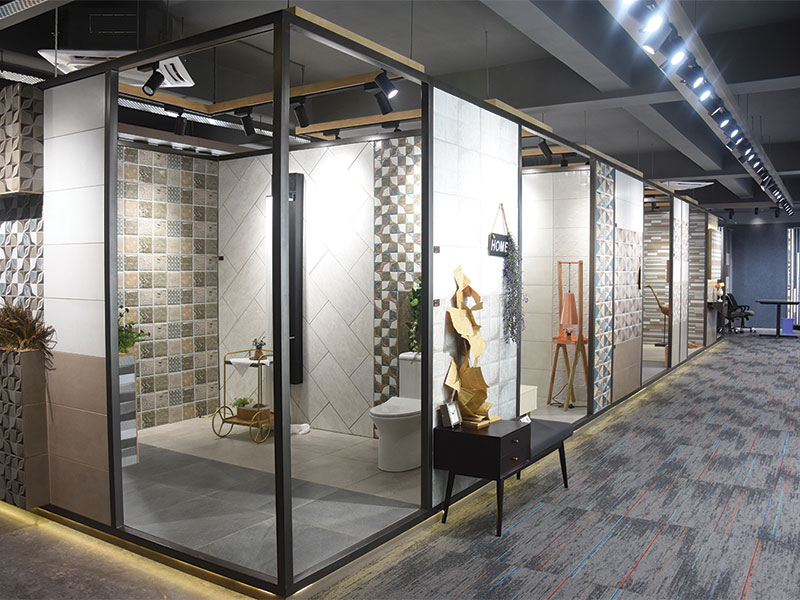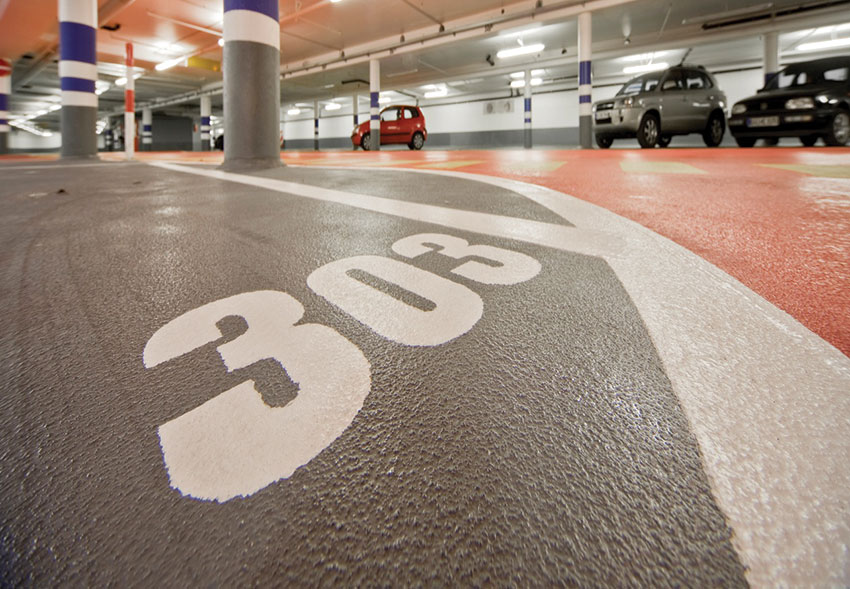
The Indian Industrial Flooring Industry has moved beyond preconceived notions.
Ask any Industrial Flooring solution provider about the right flooring for a particular industry and he will respond that today it's all about the requirement. The modern connotation of a good Industrial Floor encompasses aesthetics, quick installability, longevity, economy, slip resistance, quality, functionality, durability, eco-friendliness, and moisture resistance.
With the advent of modernization in every industry and the growing concern for sustainability, people have become more discerning and don't look at floors as just floors! They seek much more, and no wonder, before devising a flooring solution, an expert will take into account various factors such as the movement of people/machinery in a premise, the ambient environment, nature of activities taking place within the building and much more. There are various permutations and combinations, and there can be different floors for different departments in a single industry these days.
What's more, the market is abuzz with such products and companies are constantly upgrading their offerings to meet the growing demand in various segments such as airports, Metro-Rail projects, shopping malls, IT parks, and SEZs. According to experts, the Logistics, Warehousing, and Packaging Industries have also played vital roles in boosting the Industrial Flooring market upwards. They are also of the view that big ticket projects like Delhi Mumbai Industrial Corridor, where some industrial townships are planned, will increase the demand for flooring products in the future. In the following pages, the industry's bigwigs share their views with S.D. Khan.
Bekaert Industries Pvt. Ltd.

Mr. Ganesh Chaudhari, GM – Middle East & South Asia, Bekaert Industries Pvt Ltd
Initially, floors were applied either plainly or reinforced with conventional reinforcing steel welded meshes & Rebars. It was, however, only in the early seventies that the first experimental work was undertaken with Steel Fibre Reinforced Concrete (SFRC).
SFRC is defined as concrete, containing discontinuous steel fibres, which are homogeneously mixed into the concrete. Dramix® steel fibres are designed especially for the reinforcement of concrete and are made of prime quality hard-drawn steel wire to ensure high tensile strength at extremely close tolerance along with hooked ends, they deliver optimum anchorage.

Dramix®'s Technical & Economic advantages:
- The use of Dramix® reinforced concrete reduces the construction time of the floor compared to mesh reinforcement.
- The floor thickness can be reduced by using Dramix® steel fibres.
- Dramix® steel fibres with a high l/d ratio offer the most economical solution compared to other types of steel fibres.
- A Dramix® steel fibre floor offers the best cost/performance ratio.
- Approx 8-22% saving per M ^2 of a floor*
- An increase in load bearing capacity due to the redistribution of stresses.
- Reinforcement throughout the full depth offers excellent crack - control.
- Optimal resistance against impact and dynamic loads.
- Joint spacings can considerably be increased
- Phenomenal increase in post crack strength
- No labor involvement to store and handle reinforcement steel at job site
- Increase in load bearing capacity due to redistribution of stresses
- Drastic Improvement in fatigue resistance
- Avoids wastage of steel reinforce- ment providing an increased economy rate of 5 to 10%
- Dramix® glued together bundles offer homogeneous distribution and can easily be added in the batching plant or in the truck mixer.
Dramix® steel fibres minimize the impact on the environment:
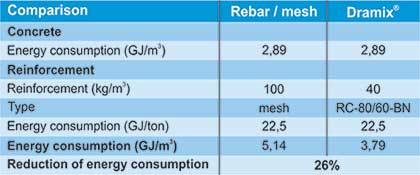
- Using less steel for the same strength compared to rebar
- Using at least 20% recycled steel in the production process
- Producing in ISO 14001 certified plants
- Creating Green products
- Allowing to build durable structures
Typically what are the steps required in laying steel fiber reinforced industrial floors?
Unlike during the laying of rebars/mesh reinforced floors Dramix® reinforced floors need less labor involvement, and is not time consuming placing of the mesh/rebar.
Executing quality floors involve-
- Sub base preparation
- Preparation, detailing
- Concrete & addition of Dramix® steel fibres
- Pouring & finishing
- Saw cuts
- Curing of concrete panels
How big according to you, in terms of value, is the market for industrial flooring in India?
The Indian economy is booming, with rates of Gross Domestic Product (GDP) growth exceeding 8 percent every year since 2003–04. One of the world's fastest growing economies – and growth expected to continue at 7-7.5 percent despite the global downturn. India is one of the favorite destinations for investments. Nearly all of the infrastructure sectors present excellent opportunities, Public private partnerships (PPPs) are gaining in importance, and are benefiting from government support – targeted PPP participation. Construction is the second largest economic activity in India after agriculture, and has been growing rapidly.
The flooring industry in India is relatively unorganized. Contractors and builders have considerably cut down on the 'under-construction' time by using new construction technologies and construction aids. This has led to decrease in the overall operational expenditures and also improved the construction quality. Though such formulations have been limited for use in only large-scale infrastructure projects like up market private constructions, it is expected that the usage will slowly pick up in all the other construction areas as well.
Are there any particular industrial sector that according to you driving the demand for SFRC industrial floors?
The logistics sector has been growing at an impressive rate of 8 to 10 per cent per annum since 2002. The World Bank's report in 2007 ranks India 39 amongst 150 countries in terms of logistics performance during the year as well as its future potential. Further, the Indian logistics industry is expected to grow annually at the rate of 15 to 20 per cent, reaching revenues of approximately US$ 385 billion by 2015. Fuelled by the increasing trend 3 Part Logistics, including on the warehousing / ports & transport segment is estimated to grow at about 30 per cent annually.
Apart from SFRC which are the other technologies that you feel have potential in India with respect to industrial/commercial flooring?
Infrastructure development has been on full swing in the country with large scale investments planned in both public works as well as private development projects. The construction techniques and aids are constantly changing, and with the constant efforts to reduce the total time for construction without adversely affecting the quality or worksmanship; products that can help attain these criteria are likely to achieve a control position.
Give us a few examples of industrial flooring projects in India wherein your products have been used?
With a 110 Tons Axle load. Toyota Container Stacking Yard in Karnataka sprawled across an area of 17,200 sqm, in their existing campus stacks 4 Full Containers of 26 Tons weight each and have a Kalmar Reach Stacker for the movement of containers.
Bayer India decided to set up a chemical unit at Ankaleshwar in Bharuch district of Gujrat. Bekaert thus building the First superflat leak-proof floor in India.
Liebherr CMCtec India Pvt. Ltd. manufactures products from the mixer and construction crane sectors at its location in Pune, India. The manufacturer required a flat floor with minimal joints, The solution offered was construction of 25m x 25m panel size .The selected design option was an SFRC Jointless floor.

Tell us about the support services provided by you to your clients for successful execution of industrial flooring projects.
At Bekaert, we do not believe in selling our product, we are a solution provider a partner to our clients. Our work does not end at supplying, to ensure that our product is used in the best manner and to its maximum advantage, we provide the Bekaert application engineering team on our client's site.
This team ensures the correct use of Dramix SFRC for the flooring of the project, this service comes to the client with no additional cost and is a gesture from Bekaert ensuring our client's successful project execution. At Bekaert, our motto of "better together" stands strong with our continuing focus on providing quality service to our customers and develop relationships built on trust.
Bomanite India
Please give a brief overview of the Industrial Flooring industry with respect to the market, its size, demand drivers and newer trends coming up due to the growing concern for sustainability and longevity.
Mr. Anant Shekhar Sahay,
COO – Bomanite India
What are the different types of Industrial Flooring materials available in the market and what products are you offering? What is Bomanite's USP?
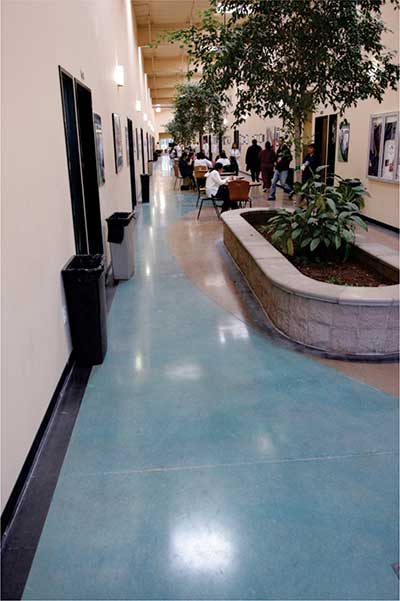
We have :
- Polished concrete in UV resistant pigmented integral colour concrete with 3 types of finishes:
- Cream finish
- Salt and pepper
- Exposed aggregate
- Polished concrete in UV resistant colour hardner dry shake method which gives a fabulous high gloss finish to the surface. One distinct advantage over any other polised concrete system is that the colour hardner increases the abrasive strength of the concrete to double!
- We use only HTC Machines to give a highly smooth glossy finish which has better light reflectivity than any other system and also over other polishing machines.
- our applicators are trained from abroad by our parent company Bomanite International.
- all our colours are UV resistant so fading is non-existent.
- we work on a supply-apply model so it's a one stop shop for sourcing of materials to laying the floor, and finally, the finishing. Its critical as we need to have high flatness for a unform high gloss.
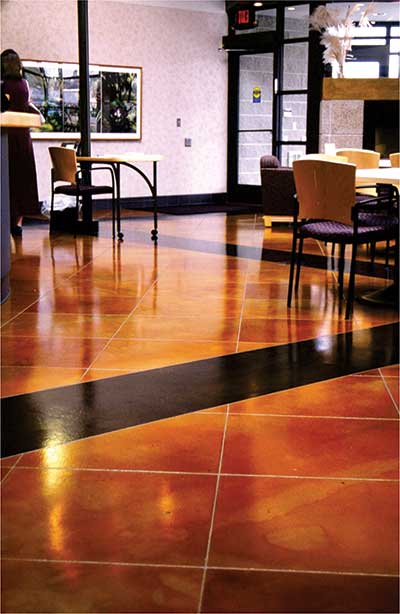
In my view, the selection criteria for any specific area depends upon many factors and there are many products which are used for the specific floor. Bomanite systems can match all the criteria given below.
Criteria for Selection of Floor Coatings:
- Repair and protection of damaged floors
- Quality performance of facility floors
- Transforming dull floors into beautiful surfaces
- Cost-efficiency and practicality
- Ease of installation
- Time constraints and service uptime.
Floors decay in time and due to daily wear and tear. Floor surfaces may show cracks and holes, or become slippery and more dangerous to walk on as their resistant abilities are lessened. Floor damages can result to:
- Uneven surfaces that pose safety threats or potential accidents
- Ugly- and dirty-looking floors
- Growth of harmful microorganisms that pose health threats.
- More severe floor damage
Polished concrete floor/overlay bring facility floors back to their top condition and former beauty. They revive the floors from physical and chemical damages inflicted by daily operations and traffic. Hence for any type of flooring criteria polished concrete scores over any other flooring system. The chart given below draws a comparison with other options available in the market for industrial flooring system.
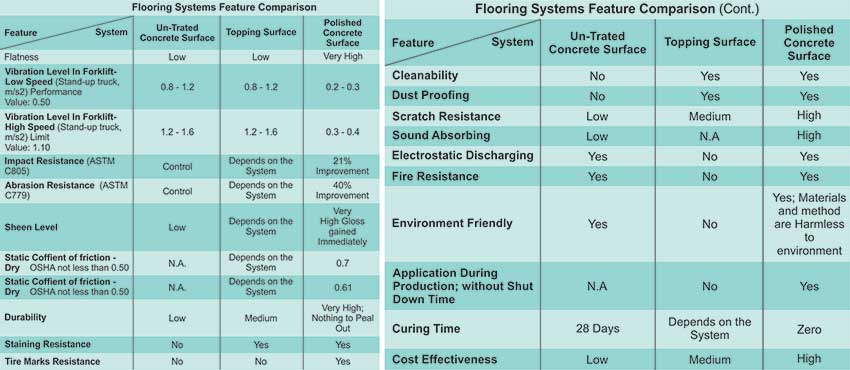
What are your insights on the opportunities, growing competition, and innovative products and new ideas required to flourish in the market?
This is a new system and we are introducing it in selected markets. As far as industrial polishing is concerned, we have done several tie ups to cater to all types of industrial flooring requirements. As polished concrete scores over any flooring systems, I think the opportunity is immense, one needs to create a good awareness of this system, application and workmanship should be excellent. Feartures like durability, high abrasive strength, good light reflectivity, and anti skid properties score over other competing products like epoxy or vinyl flooring. Major competition will come from epoxy type floors used widely in India. But once awareness is widely done there would be a lot of takers for this flooring. We are very optimistic about this system. Bomanite is a name associated with innovative flooring solutions with a decorative look. We were the pioneers in Stamped concrete in paving industry and brought about a revolution in the market when we introduced it 4 years ago. Decorative Polished concrete is the next big thing.
Market prediction on demand for 12th five year plan.
We are only looking at colour polished concrete/over lay system as a niche market product now. But we're expecting to lay around 2 million sqft this financial year.
MC-Bauchemie
What are the different types of industrial flooring materials available in the market?
Mr. Sunny Surlaker,
MC-Bauchemie India Private Limited
- Screeds formulated from Liquid Plastics like Epoxies, Polyurethanes etc.
- Screeds formulated from Resins like Methacrylate monomers
- Thin toppings formulated from acrylics/SBR dispersions
- Thin polymer toppings formulated from Epoxy Cement combinations
- Thin toppings / coatings based on a variety of polyurethanes or epoxy resins
- Self-Leveling polymer cement floor toppings
- Dry shake floor hardeners based on metallic aggregates
- Dry shake floor hardeners based on non-metallic aggregates
- Liquid Floor hardeners based on modified silicates
- Decorative Epoxy-Terrazo floorings
- Specialized resin-based coatings such for Electro-static charge discharging floors
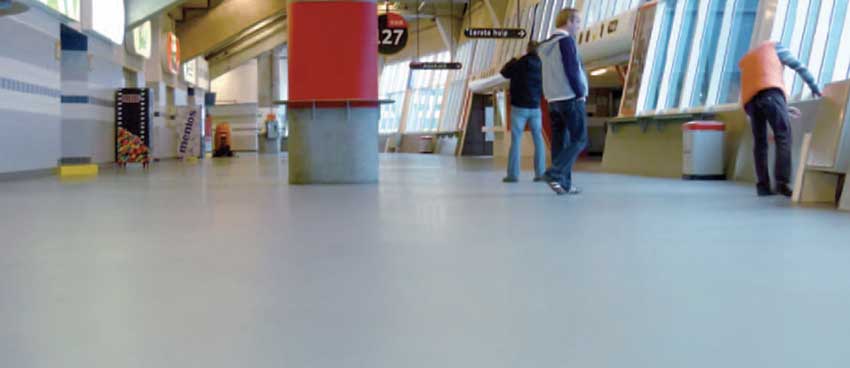
Please elaborate upon the selection criteria for specific application areas.
It is imperative that design and execution planning for industrial flooring is considered right at the conception stage of the project to avoid future failure. Right at the outset, the client or the factory owner should clearly spell out the exact requirements of each department's flooring with respect to its usage and this should be technically co-related to the stresses the flooring has to carry under service conditions. It should be noted that even in one industry there would be different floorings for different departments and unfortunately there is no universal industrial flooring system to meet all the requirements.
In most of the industries, the floors are subject to the following stresses:
- Mechanical loadings
- Impact resistance
- Abrasion resistance
- Impermeability
- Antiskid
- Crack bridging
- Chemical Resistance
- Antistatic - electrically conductive
- Dust-free and cleanability
- Thermal stresses
Basically every industrial floor consists of three individual components:
- The base
- The topping
- The coating (optional)
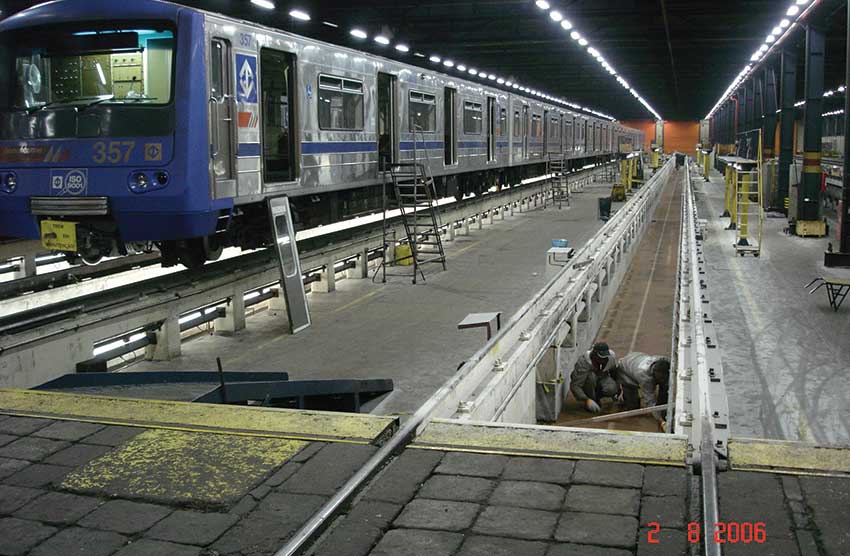
High Quality Dry-shake floor hardeners will take care of most structural requirements including mechanical loading, impact, impermeability and abrasion. For good chemical resistance, epoxy, epocem or PU floorings provide the best properties. For low stress loading even basic treatments such as liquid floor hardeners or polymer modified self-leveling screeds would do. Where extreme chemical resistance is required, epoxy or PU coatings (upto 2 mm) are best solutions. Liquid plastics are the best options for other aesthetically pleasing floorings or special requirements for clean rooms, electrostatic charge discharging, cleanability, etc.
Last but not least, system build up is the most important part of industrial flooring. For example, Epoxy or PU floorings require a high-grade epoxy mortar scratch coat before coating or 2 mm flooring. Adequate moisture barrier for the flooring should be ensured and it should be remembered that the moisture content of concrete is less than 6% during application of Liquid Plastics to ensure long term durability. Dryshake floorings require good power trowelling and vacuum dewatering services. It should be ensured that the applicator / contractor has reasonable experience in the field of that particular kind of floorings and all the parties involved in construction from design to execution share equal responsibility to ensure the flooring is a success.
What are your insights on the opportunities, growing competition, and innovative products and new ideas required to flourish in the market?
The opportunities for construction chemicals are innumerable, as till today a very small percentage of construction uses these advanced materials. Even the Construction Chemicals Manufacturer's Association (CCMA) hopes to increase user awareness to increase quality of construction using high-grade products.
Growing competition always leads to the latest innovations entering the market. At the same time it should be remembered that only competitive cost of materials is not a valid measure for a product. Rather costs of application and maintenance over life-cycle of the flooring should become the winning criteria for material and system selection.
Newer product developments are always in the offing from the top tier construction chemical companies. These have led to latest innovations like toppings for a wide variety of applications in pharma-cleanrooms, ESD floorings, UV resistant coatings, Liquid Plastics for use in Freezing units, Decorative industrial flooring (offering high impact, chemical, cleanable, impermeable surfaces) and many more. Latest polymer technologies help make better underlayment and screeds offering higher chemical resistance and better toughness. The path of innovation is a continuing one and best for a booming industry, such as that in India.
Newer ideas / attitudes in addition to better control processes will help ensure durability. Selecting an experienced contractor to install the topping is as important as choosing durable Industrial Flooring Systems. For best results, a trained contractor, good quality topping and coating material, strict specifications and vigilant supervision is required. Short-term economy should be foregone in favor of long-term durability. The most important requirement of industrial floor should be that it allows trouble-free and uninterrupted production. Top quality flooring should be a top priority to industry owner.
Neocrete Technologies Pvt Ltd
What are the different types of industrial flooring materials available in the market and what products are you offering?
Mr. B M Nagarajan,
Director - Neocrete Technologies Pvt Ltd
- All our products are cast-in-situ (executed at site) systems
- They are based on epoxy, PU or acrylic polymers to provide the best protection systems
- Our products are all custom-designed (in terms of colours, designs, patterns, textures etc)
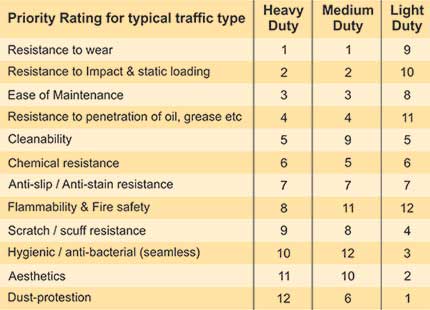
As stated above, each industry has a different set of criteria and it is very difficult to generalize all of them. Again, different operating area in the same plant would require different products. For example, in an automobile plant, paint booth and welding area require two different operating conditions. Hence we have developed a matrix of different set of conditions vis-a-vis loading conditions that can be seen in the accompanying table.
Besides the above, other factors that determine the selection criteria of type of flooring for a particular situation are as follows:
- User performance requirements such as: appearance, turn-around time, expected life, tolerance of failure and cost
- Service/Exposure conditions such as: loads, atmospheric gases, chemical contact, UV exposure, moisture (or steam) and temperature
- Placement conditions such as: Operating conditions during placement & curing and placement technique.
Opportunities & challenges: Right now, it is very difficult to be optimistic in the present climate of depressed sentiment. However, we have to look forward to an improvement in the investment climate as industrial floorings are heavily dependent on new investments taking place in various segments in the manufacturing sector. Having said that, success in the industrial flooring is closely related to how well you provide the service to the client rather than the product per se. Execution capability in providing quality solution at the committed time within the agreed parameters of the cost only determines the growth. Hence, we are concentrating on investment in adequate tools and equipment, training of work-force and improving our capability in project management so as to meet the emerging needs of growth in the next few years.
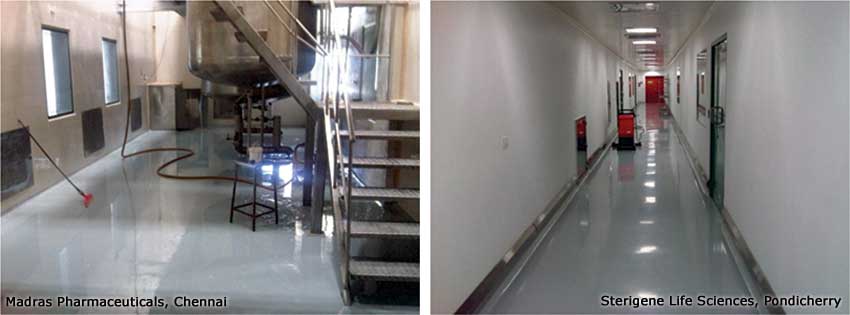
Another challenging aspect in the industrial flooring segment is the ability of service-provider to accurately determine the specification of flooring suitable for a particular situation. Even in developed world, majority of failures occur due to wrong specification and execution rather than the wrong product. It is needless to say that education, training and empowerment of end users are of paramount importance.
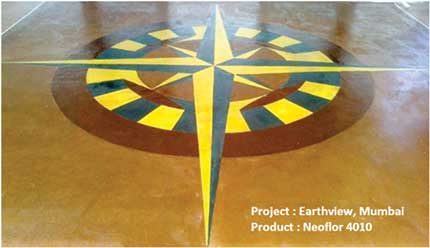
We strive to offer innovative products that would normally be very difficult to execute. For example, we did a designer concrete with coloured micro-toppings with stunning effect. (See picture below)
Market prediction on demand for 12th five year plan.
The market potential in this industry, especially in India is definitely high, given the fact that the industrial flooring market is less than 2% of the construction industry turnover. However converting the market potential into a viable opportunity is a different matter. The sluggish investment climate currently being felt in India has obvious fall-outs in all other associated sectors including our flooring market. As about 80% of flooring market is contributed by new projects and the balance 20% from maintenance market, a healthy investment climate is essential in exploiting the market potential.
JBA Concrete Solutions
Please give a brief overview of the Industrial Flooring industry with respect to the market, its size, demand drivers and newer trends coming up due to the growing concern for sustainability and longevity.
Mr. Jagdeep Bhalla,
Director, JBA Concrete Solutions
What are the different types of Industrial Flooring materials available in the market?
Sand, cement, and concrete are the three basics of any floor. Nowadays there's a growing trend of flat floors too. Then there are the use of fibres these days for reinforcement. On a rested slab, there is no point in using steel bars as there is no tension on the slab. All kinds of fibres do the job, but which one does it better is the question. We have predetermined notion that steel fibre is the best. But polypropelyne, polyester and glass fibres are much better. But then there's a new generation of fibres known as co-polymers which is a mix of polyethylene and polypropylene.It Is as strong as steel which provides better bonding having over 2 lacs strands in a Kilogram.
From the trends of M-15, we are now using M 25 and M30 to increase the life cycle of any floor which only increase the strength of the concrete. The different types of industrial flooring materials include epoxy and sealants. Sealants include products, such as
Ashford Formula:- Leader in concrete densification since 1949, it is a transparent, chemically reactive, water based sealer that penetrates into the concrete floors protecting, preserving and strengthening it permanently providing a dustproof and abrasion resistant floor.
Retro plate System:- It is a concrete polishing system which is a combination of concrete densification and diamond polishing. It revitalizes and strengthens concrete floors old or new. It's a total green product increasing the reflectivity by 30%. It comes with a wide variety of dyes.
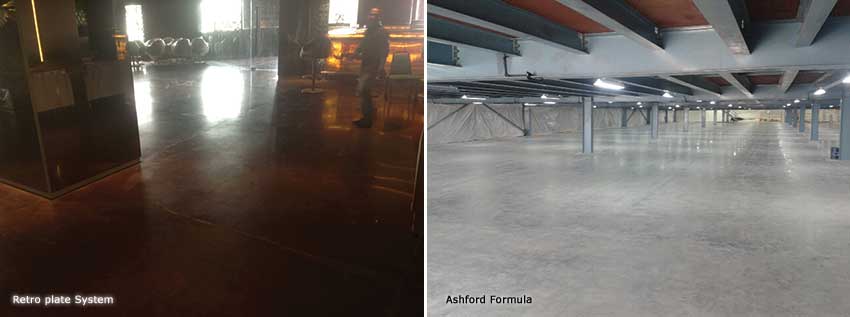
For high strength and load requirements, use of fiber is recommended, like
Forta Fibers: They are useful anywhere mere peak fiber performance is desired and where the objective is to control plastic shrinkage/cracking while improving basic durability properties. The FORTA products are an ideal replacement for industrial steel. These fiber products made from a variety of polymers offer maximum long-term durability, and true secondary/temperature control. To help you choose the correct Forta product, FORTA CORP brings you the FORTA "4-C's" categories, which help you predict the fiber performance level for a given project. The 4-C's are - Configuration, Chemistry, Contents, and Correct length.
Moving on to floor treatment, this can be done through laser speed and truck screed. Basically, floor treatments are impregnations which react with free lime alkali and form a bond. These treatments are generally made of silicates and are used for dustproofing, sealing and making the concrete abrasion resistant.
Please elaborate on the selection criteria for specific application areas.
Floors are always pre-decided and they are only used on concrete. The basic floor has to be good and then you can decide the coating for a clean room, automotive, or warehousing. Concrete is nothing but common sense and good workmanship. The Aim should be to provide a floor which has low maintenance cost and has a longer life.
What are your views on the opportunities, growing competition, and innovative products and new ideas required to flourish in the market?
The opportunities are increasing as due to FDI more companies are being introduced in India therefore higher expansions and need for innovative products increases, which we deliver. The prime determinant which all companies should adhere to is eco-friendliness.


